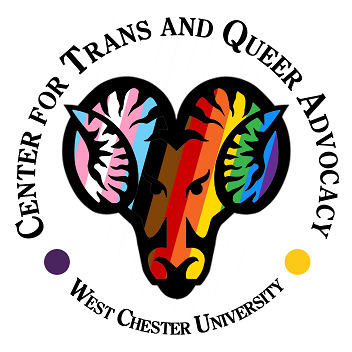Photo taken from West Chester University, Center for Trans And Queer Advocacy Facebook page
Sept. 17, 2020 at 3 p.m., members of WCU’s Center for Trans and Queer Advocacy hosted a virtual presentation about queer and transgender presence in the media, allowing participants to engage in meaningful conversation surrounding LGBTQ+ representation.
Organizers Holland Morgan and Julian Cairns created a PowerPoint highlighting various examples of movies, shows, comics and other media forms that portray queer and transgender identities, as well as tactics used by media corporations to profit off of the community.
Before the presentation, Morgan and Cairns went over basic ground rules with the eight participants, one of which included the center’s Administrative Assistant Soozie Davidson. Participants were asked not to discuss others’ personal stories outside of the presentation in order to protect the community’s privacy. “Take away what you’ve learned, but don’t share what is talked about in conversations,” also referred to as the “Vegas Rule.”
Participants were asked by Davidson if they could ever “see themselves” in the media that they grew up on. Although hesitant to reply at first, a few people felt that they couldn’t identify with what they saw on TV or in movies. The participants’ responses helped segue to the first main topic of discussion: dated vs. current mainstream media.
…a few people felt that they couldn’t identify with what they saw on TV or in movies.
Cairns saw a noticeable difference between LGBTQ+ shows from 20 years ago to now. “[There were] lots more white, cis gays, especially between the two Queer Eye shows,” Cairns said. On the contrary, the Netflix show “Pose,” created in 2018, is primarily centered around Black transgender characters, raising the expectation that “we’re gonna see more than cis, white, gay people” in current mainstream media.
However, the media is still at fault in continuing the “portrayal of the tragedy story” in LGBTQ+ content, Morgan added. Morgan and Cairns addressed their concerns with writers constantly putting queer and transgender characters into situations that lead to sadness and death instead of healthy, happy relationships for readers to connect with.
In addition, the presentation mentioned ways the community has been exploited in the media for profit. TV shows tend to use “queer-baiting” by hinting at queer relationships with no intention of canonizing the pairing, rarely making the characters reoccurring.
Hollywood has also been responsible for villainizing LGBTQ+ members through the Hays Code, named after the president of the Motion Picture Producers and Distributors of America Will H. Hays. For example, Ursula from “The Little Mermaid” and HIM from “Powerpuff Girls” are both antagonists modeled after famous drag queens. “I look for queer media that actually serves the community, rather than profit off of it,” said Morgan.
As the presentation was coming to an early end, participants engaged in a few minutes of conversation, discussing concerns they felt about the way the media portrays queer and transgender characters and what they’d like to see more of. Before the organizers and participants signed off from the event, Davidson announced that West Chester University’s library is now purchasing more queer-related graphic novels for students to rent.
For more information regarding resources or events, students can check out: https://www.wcupa.edu/_services/transAndQueer/
Nikki Haslett is a fourth-year student with an English writing major and journalism minor.

